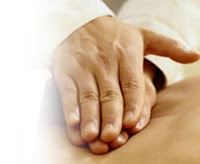|
By Peter W. Crownfield, Executive Editor of Dynamic Chirorpactic
The past 12 months have been good – very good – for the chiropractic profession in terms of data supporting the efficacy of chiropractic care.
For starters, consider the Wellmark pilot study that suggests chiropractic reduces both costs and need for surgery;1 the Milliman USA analysis that concludes, “[S]pinal patients who seek chiropractic coverage have materially lower health care costs than those who do not”;2 the Consumer Reports reader survey that found “hands-on” therapies, led by chiropractic care, were the top-rated treatments for back pain sufferers, with chiropractic receiving the highest satisfaction-with-care ratings (significantly higher than MDs);3 the “Mercer Report” that suggests chiropractic compares favorably to most therapies covered by health benefit plans and is “likely to achieve equal or better health outcomes”;4 and the final report on the Medicare demonstration project, which notes that 87 percent of patients surveyed gave their DC a satisfaction score of 8 or higher and 56 percent gave a perfect 10.5 The latest thumbs-up comes courtesy of a survey analysis published in the June 2010 issue of the Journal of the American Board of Family Medicine.6 The analysis, based on data from the 2002 National Health Interview Survey, revealed that 60 percent of U.S. adults utilizing CAM therapies for back pain reported “a great deal” of benefit. Chiropractic was used most frequently (74 percent of respondents) and had the highest success rate (66 percent reporting significant benefit). The analysis evaluated utilization of six CAM modalities: chiropractic, acupuncture, massage, relaxation techniques, herbal therapy, and yoga / tai chi / qigong. Sixty-nine percent used one therapy only, 21 percent used two, 8 percent used three, 1 percent used four and less than 1 percent used five or more therapies. Massage was a distant second in terms of patient use for back pain (22 percent of respondents reporting use) and perceived benefit (56 percent reporting “a great deal” of benefit for their back pain). The percentage of respondents perceiving similar benefit for the other CAM therapies was as follows: 56 percent for yoga / tai chi / qigong; 42 percent for acupuncture; 32 percent for herbal therapies; and 28 percent for relaxation techniques. Two factors were independently associated with greater perceived benefit from CAM use for back pain: better self-reported health status and an indication that “conventional medical treatment would not help.” The factor most associated with less benefit from CAM for back pain was “referral by a conventional practitioner.” The authors of the survey analysis speculate that more or less perceived benefit may be attributable to several factors, including that an independent decision to utilize CAM (rather than being referred) may increase perceived benefit, while referred patients may have pain that is less responsive to treatment (contributing to less perceived benefit). What is not discussed is whether data is available on the professional usage patterns for those who self-referred vs. those referred by a medical provider. If those who self-referred chose different providers than those referred by an MD, it could have impacted perceived benefit with care, particularly the reduced benefit perceived by those referred by an MD. If there is a difference, and it can be shown that it did impact perceived benefit, it suggests that MDs need to have a better understanding of which CAM providers to refer to for back pain. Given that chiropractic continues to have the highest level of patient satisfaction, MDs who choose other CAM providers would want to ensure that they are not making that choice based on false assumptions. This difference also might ultimately lead to more specific referral criteria for MDs referring to CAM providers for back pain. References
Source: dynamicchiropractic.com |
